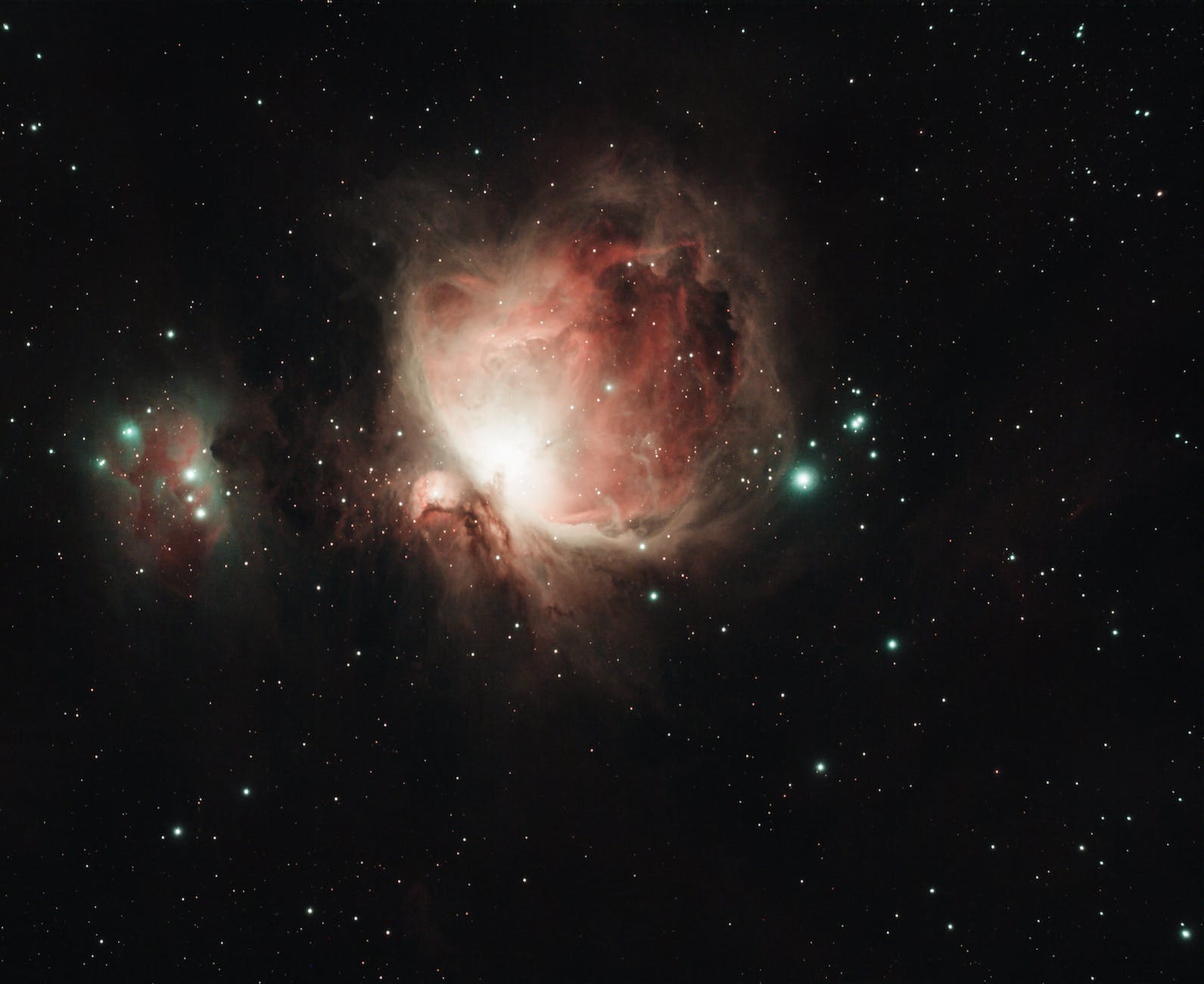Unveiling the Enigmatic Beauty and different Types of Nebulae through the Eyes of Astronomy
Introduction
As we gaze up at the night sky, we are often mesmerized by the breathtaking beauty of the stars. However, among these stars, there exist celestial phenomena that rival their splendor: nebulae. Nebulae are vast clouds of gas and dust scattered throughout the cosmos, giving birth to stars and displaying stunning colors and shapes. In this article, we will delve into the captivating world of nebulae, exploring their different types of Nebulae and discovering how to observe them. Let’s embark on a cosmic journey!
1. Emission Nebulae
Emission nebulae are the vibrant celestial nurseries where new stars are born. They owe their luminosity to the ultraviolet radiation emitted by the young, hot stars within them. The radiation ionizes the surrounding gas, causing it to glow with beautiful colors. One of the most famous emission nebulae is the Orion Nebula, located in the constellation Orion. To observe emission nebulae, you will need a telescope with a wide field of view and a nebula filter to enhance the contrast.
2. Reflection Nebulae
Unlike emission nebulae, reflection nebulae do not possess their own light source. Instead, they reflect the light of nearby stars, illuminating the gas and dust within them. This gives rise to a stunning blue coloration, as blue light is scattered more than other colors. The Pleiades, also known as the Seven Sisters, is a well-known open star cluster surrounded by a beautiful reflection nebula. To observe reflection nebulae, a telescope with a wide field of view is ideal, along with a nebula filter to enhance the contrast.
3. Planetary Nebulae
Contrary to their name, planetary nebulae have no connection to planets. These captivating structures are formed during the final stages of a star’s life. When a star exhausts its nuclear fuel, it undergoes a series of dramatic transformations, shedding its outer layers into space. The remaining core emits intense ultraviolet radiation, causing the expelled gas to glow brightly. The Helix Nebula, located in the constellation Aquarius, is a striking example of a planetary nebula. To observe planetary nebulae, a medium-sized telescope and a narrowband filter are recommended.
4. Supernova Remnants
Supernova remnants are the remnants of colossal stellar explosions, known as supernovae. These cataclysmic events occur when a massive star reaches the end of its life and collapses under its own gravity, then violently explodes, dispersing its outer layers into space. The expanding shockwave interacts with the surrounding interstellar medium, creating mesmerizing structures and releasing vast amounts of energy. The Crab Nebula, located in the constellation Taurus, is a renowned example of a supernova remnant. Observing supernova remnants requires a telescope with a moderate to high magnification and a narrowband filter.
5. Dark Nebulae
Dark nebulae, as their name implies, appear as dark regions against the backdrop of bright stars and nebulae. These dense clouds of gas and dust obstruct the light from background stars, resulting in striking silhouettes. Despite their apparent lack of light, dark nebulae are crucial for the formation of stars. They serve as the birthplace of new stellar systems, acting as the raw material from which stars and planetary systems emerge. The Coalsack Nebula in the Southern Cross constellation is a famous example of a dark nebula. To observe dark nebulae, a telescope with a wide field of view and a nebula filter can be useful.
6. Supernovae
Supernovae are immensely powerful explosions that mark the dramatic deaths of massive stars. These cataclysmic events release an enormous amount of energy and briefly outshine entire galaxies. Observing a supernova can be a rare and awe-inspiring experience. However, capturing one in real-time requires precise timing and a bit of luck, as they are unpredictable events. To increase your chances of witnessing a supernova, stay updated with astronomical news and consult professional sky-watching resources.
Conclusion
Nebulae offer us a glimpse into the extraordinary nature of our universe. From the mesmerizing birthplaces of stars to the remnants of stellar explosions, these cosmic clouds never fail to captivate our imagination. Armed with the knowledge of their different types and the techniques to observe them, you are now ready to embark on your own cosmic exploration. Take a journey through the night sky and witness the ethereal beauty of nebulae firsthand. Happy stargazing!
Remember, a vast universe awaits you, just a telescope away.
Note: Due to the vastness and dynamic nature of the cosmos, the appearance and accessibility of nebulae can vary. It is recommended to consult with experienced astronomers and keep track of celestial events to optimize your observing experience.

